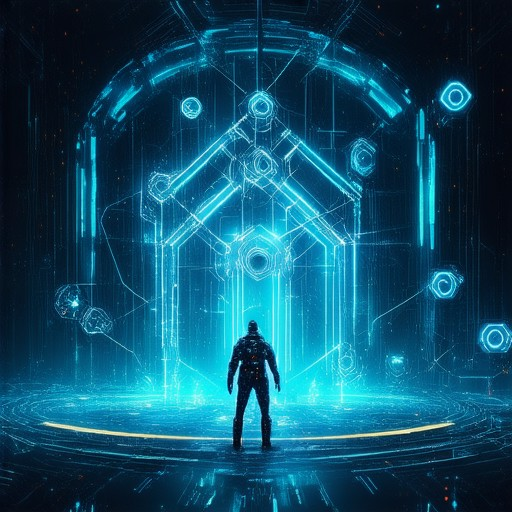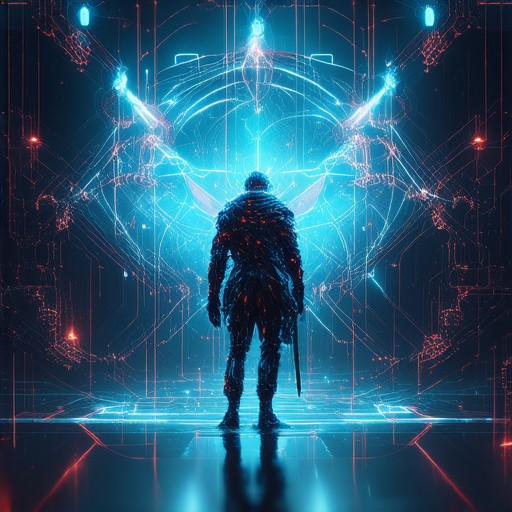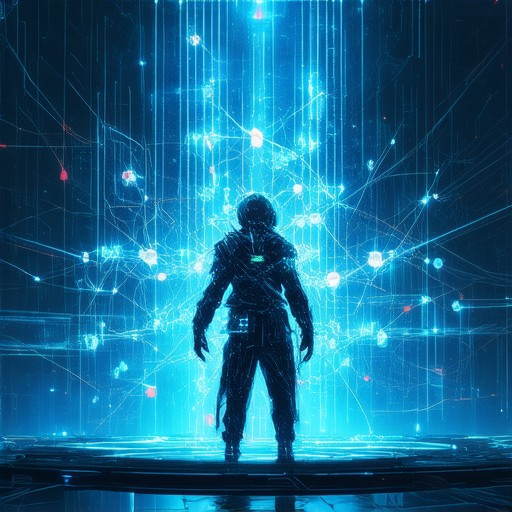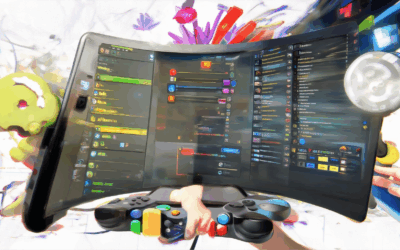Game balance is a cornerstone of enjoyable gaming experiences, ensuring that every element within a game works harmoniously to provide both fun and fairness. Whether you’re a casual player or a dedicated enthusiast, achieving perfect game mechanics is crucial, which is why testing game balance is essential. This step-by-step guide delves into the intricacies of balancing games, covering everything from understanding the basics to advanced techniques, career opportunities, and overcoming common challenges. By exploring topics like checking the balance of power, monitoring updates, and even improving your skills, this article equips you with the knowledge needed to master game balance testing. Whether you’re looking to refine your own gameplay or break into the world of professional testing, read on to discover how to ensure your games are as balanced as they are engaging.
Key Takeaways
- Understanding Game Balancing Complexity: Balancing games is challenging due to intricate variables like mechanics, characters, and environments needing precise tuning.
- Adapting to Diverse Playstyles: Balancers must cater to strategic, fast-paced, and creative players simultaneously.
- The Importance of Playtesting: Extensive testing is crucial, though predicting all interactions remains difficult.
- Continuous Adjustment Post-Launch: Ongoing updates refine initial balances into optimal configurations.
- Balancing Free-to-Play Games: Maintaining fairness while encouraging spending is vital for monetization.
- Navigating Community Feedback: Balancing must navigate conflicting feedback and maintain the original vision.
- Optimizing Across Platforms: Tailored optimizations ensure consistent performance across various devices.
- Physical Health for Better Balancing: Enhance strength, coordination, and flexibility through exercises like planks and yoga.
- Mental Focus and Adaptability: Mindfulness and stress management improve balancing skills.
- Exercise and Flexibility: Regular workouts and stretching improve balance and mobility.
- Aging Gracefully: Active lifestyles and strength training counteract age-related balance decline.
- Seeking Professional Guidance: Experts can provide personalized advice for improvement.
- Core Elements of Game Balance: Fairness, challenge, reward, and customization are foundational.
- Effective Balancing Strategies: Iterative testing, player feedback, and data analysis drive success.
- Learning from Successful Games: Titles like Among Us and World of Warcraft offer valuable lessons.
- Ongoing Iteration for Excellence: Continuous adjustments based on feedback lead to balanced, engaging games.

How to Determine if a Game is Balanced
To assess whether a game is balanced, consider the following key factors:
- Difficulty Curve : Examine how the game’s difficulty progresses. A balanced game offers consistent challenge without sudden spikes or plateaus that frustrate or bore players.
- Progression Systems : Ensure that players can advance meaningfully without feeling trapped or overwhelmed. Progression should reward skill growth and provide clear goals.
- Skill Ceiling : Check if there’s a point where players can continuously improve. A game with a high skill ceiling keeps players engaged as they aim for mastery.
- Enemy Variety and Challenges : Assess if enemies and challenges offer diverse strategies and experiences. Monotony can lead to imbalance.
- Player Feedback : Monitor feedback from various playtest groups. Balance lies in catering to a broad audience without alienating any group.
- Mechanics Simpllicity and Effectiveness : Ensure core mechanics are intuitive yet rewarding. Complexity can hinder enjoyment.
- Testing and Iteration : Regular playtesting with different demographics helps identify issues and refine balance.
By evaluating these elements, you can determine if a game provides a fair and enjoyable experience for its intended audience.
How to Check Game RCS Balance
To check your game RCS balance, follow these steps:
- Check Through the Game Menu: Access the game’s main menu and look for a section labeled “Progress,” “Stats,” or “Achievements.” Your RCS balance is often displayed here.
- View In-Game Character Sheet: Navigate to your character’s stats or inventory. Some games show RCS balance in the character information panel.
- Monitor Notifications: Many games send notifications when you unlock a new level of RCS or complete specific objectives. Check your in-game notifications for updates.
- Use External Tools: Some players use third-party apps or platforms that track game statistics. These tools can provide real-time updates on your RCS balance and other progress metrics.
- Contact Customer Support: If you’re unable to find your RCS balance through the above methods, visit the game’s official support website or contact their customer service team for assistance.

How to Test Games for Money
Testing games for money offers a unique opportunity to earn while contributing to gaming development. Here’s a structured guide to help you get started:
- Freelancing as a Game Tester – Platforms like Upwork and Fiverr allow you to offer testing services. Start by creating profiles highlighting your attention to detail and technical skills.
- Become a Beta Tester – Many game developers seek beta testers for pre-release games. Sign up on official developer websites or forums to find these opportunities.
- Game Streaming and Live Testing – Engage with game streamers on platforms like Twitch. Provide feedback during live streams to potentially earn rewards or tips from viewers.
- Participate in Game Beta Programs – Keep an eye out for beta recruitment announcements on game developer websites. Apply for programs that match your availability and interests.
- Focus on Usability Testing – Evaluate game designs for usability, helping developers improve user experience through feedback on controls and interface design.
Getting Started
- Education and Skills – Consider online courses or guides to learn testing frameworks and methodologies. Basic understanding of software testing is beneficial.
- Monetization Strategies – Research average rates for testing gigs to set realistic expectations. Freelancing may offer variable earnings compared to fixed payments from beta programs.
- Building a Portfolio – Document and showcase your testing experiences, including detailed feedback, to attract clients and enhance your credibility.
- Legal Considerations – Awareness of non-disclosure agreements is essential to protect sensitive information and maintain professionalism.
- Networking Opportunities – Join online communities and forums focused on game testing to connect with professionals and gain valuable insights.
By exploring these avenues, you can leverage your skills to enter the game testing field, starting with entry-level positions and advancing as you gain experience and build a robust portfolio. This path offers flexibility and the potential for meaningful income in the gaming industry.

Why is Game Balancing So Difficult?
Game balancing is a complex task due to several factors:
- Complex Systems : Games feature numerous variables, including mechanics, characters, items, and environments, each requiring precise tuning to ensure equilibrium.
- Diverse Player Preferences : Players have varied playstyles; balancing must cater to strategic thinkers, fast-paced players, and creative individuals simultaneously.
- Testing Challenges : Extensive playtesting is essential, yet predicting all interactions among variables remains difficult, often revealing unforeseen imbalances post-launch.
- Iterative Development : Post-release updates based on feedback necessitate continuous adjustments, refining initial balances into optimal configurations.
- Monetization Pressures : Especially in free-to-play games, balancing must maintain fairness while encouraging spending, requiring careful monetization integration.
- Community Influence : Player feedback and discussions shape development, sometimes conflicting with the original vision, complicating balance objectives.
- Platform Variations : Ensuring consistent performance across different hardware and platforms demands tailored optimizations, impacting overall balance.
Thus, game balancing is intricate, involving technical, player behavioral, and business considerations, necessitating ongoing refinement to achieve harmony.
Why Am I Not Good At Balancing?
Your difficulty in balancing may stem from several interconnected factors:
- Strength and Coordination Insufficiency
- Lack of muscle strength and coordination can significantly impair your balance. Engage in regular exercises that target your core muscles, such as planks and push-ups, to enhance your stability.
-
Mental Focus
- Improving your mental focus is crucial for maintaining balance. Practice mindfulness during activities like walking or yoga to stay attuned to your surroundings and movements.
-
Footwear Choices
- Wear shoes with adequate support and traction to prevent slips. Replace worn-out shoes and consider wearing well-fitting socks for added security.
-
Dietary Deficiencies
- Ensure you’re consuming sufficient amounts of vitamins D, calcium, and magnesium, found in foods like leafy greens, fortified products, and dairy, to support bone health and balance.
-
Stress and Fatigue
- Chronic stress and fatigue can weaken your muscles and impair balance. Prioritize sleep and employ stress-reduction techniques like meditation to enhance your overall well-being.
-
Exercise Routine
- Consistently perform balance exercises such as standing on one leg, heel-to-toe walks, and tai chi to build stability and control. Incorporate these into your daily routine for sustained benefits.
-
Flexibility
- Regular stretching can improve joint flexibility and range of motion, contributing to better balance. Consider incorporating yoga or Pilates into your weekly routine.
-
Aging Considerations
- While you’re still young, maintaining an active lifestyle and focusing on strength training can help counteract age-related declines in muscle mass and bone density, which are common balance inhibitors.
-
Professional Guidance
- Consulting a physical therapist or personal trainer can provide tailored advice and routines to address specific balance challenges effectively.
By systematically addressing these areas, you can enhance your balance and overall physical well-being.

What is the Philosophy of Game Balance?
Game balance is a fundamental concept in game design that focuses on creating a fair, enjoyable, and engaging experience for players. It involves carefully adjusting various aspects of a game—such as difficulty, rewards, and mechanics—to ensure that the overall gameplay aligns with the intended player experience.
Core Principles of Game Balance
- Fairness: Ensuring that all players have equal opportunities to succeed, regardless of their skill level or background.
- Challenge: Providing consistent and meaningful challenges that keep players motivated without becoming overwhelming.
- Reward: Designing systems that provide clear and satisfying outcomes for players’ actions.
- Customization: Offering options that allow players to tailor their experience to their preferences.
Implementation Strategies
- Iterative Testing: Continuously testing and refining gameplay mechanics to ensure balance.
- Player Feedback: Gathering input from players to identify imbalances and address them.
- Data Analysis: Using analytics to track player behavior and adjust game elements accordingly.
Examples in Practice
Many popular games exemplify effective game balance philosophies. For instance:
- Indie Dev Games: Resources like game design tutorials offer insights into balancing mechanics for various genres.
- Multiplayer Games: Titles like Among Us master balance by ensuring every player has equal agency in social deduction.
- MMORPGs: Games like World of Warcraft maintain balance through regular updates and patches that address power creep.
Conclusion
Game balance is not just about technical adjustments—it’s about creating a cohesive and enjoyable experience that resonates with players. By focusing on fairness, challenge, and reward, developers can craft games that are not only fun but also deeply engaging. Remember, balance is a journey, and iterating based on player feedback is key to achieving the perfect harmony in your game.




0 Comments